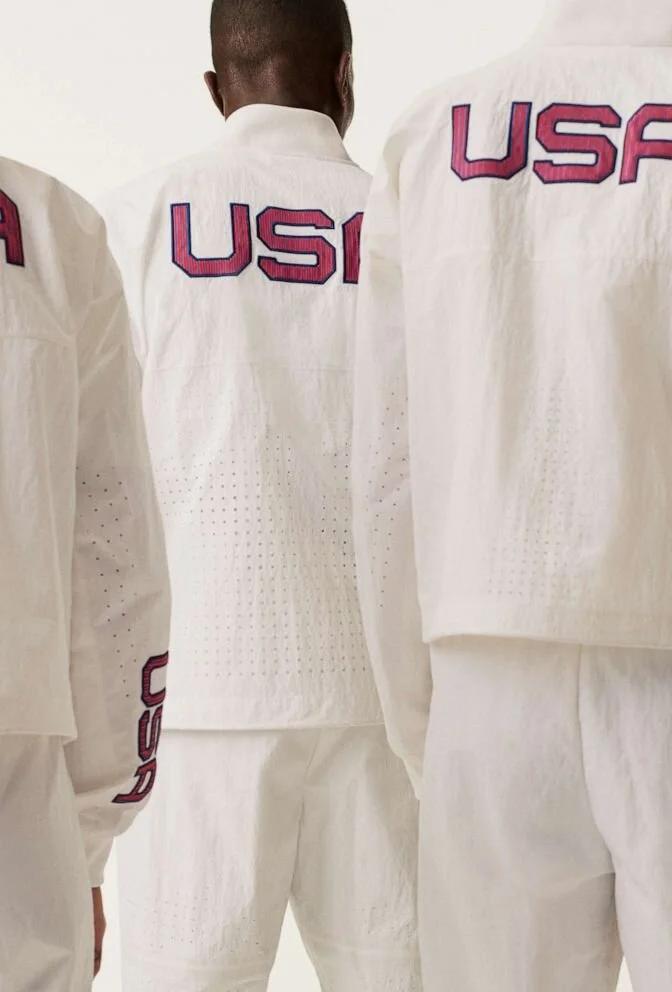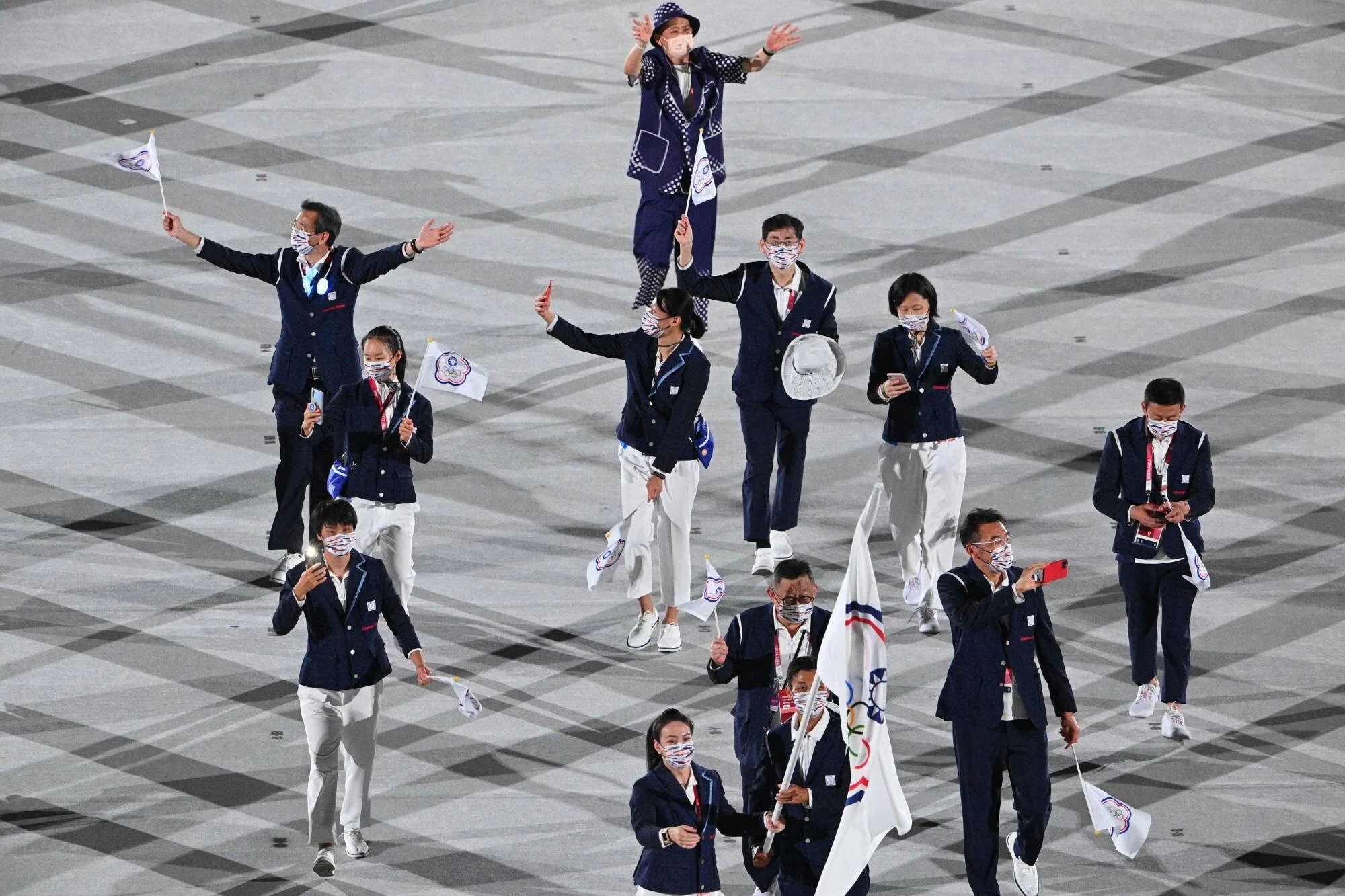
Image → NIKE
SUSTAINABILITY • 10 August 2021
Written by Laura Pitcher
Did Sustainability Win Over the Tokyo 2020 Olympics?
But climate change is still coming first place.
With the Tokyo Olympics wrapped up last week, there’s no doubt this year was a memorable one. Aside from being the first post-pandemic Olympics (with 78% of Japanese opposing the Tokyo Games because of COVID-19), there have been groundbreaking conversations around mental health, after American gymnast Simone Biles withdrew due to her mental state.
Among many of the important conversations being had around the future of the Olympics, was the uniforms. An Olympic partnership is the most coveted deal in sports marketing as it can generate brand recognition for years to come. After the 2002 Olympics, Canadian outfitter Roots reportedly sold 25,000 berets after dressing America’s sporting heroes in its pullovers and hats.
The Nike design team, on the other hand, focused on how to use almost entirely recycled fabric for the clothing the 2020 American Olympic team will wear. The Windrunner jacket is made with 100% recycled polyester. The pants are constructed from 100% recycled nylon with a 100% recycled polyester mesh lining. Additionally, the drawcord tips, zipper pulls, and Swoosh branding, are made with Nike Grind rubber.
Many of this year’s designers chose to use their platform to bring sustainable fashion to the world stage. One of these pioneering designers was Justin Chou, lead designer at Taiwanese label Luxxury Godbage by JUST IN XX, CFS 2019 Impact Design honoree. Chou was the designer behind Team Taiwan's opening ceremony uniforms this year, which won praise for the uniform’s attention to cultural detail, craftsmanship, and sustainability.
The uniform design combined traditional Taiwanese window screen patterns with the Chinese Taipei Olympic Committee (CTOG)’s plum blossom emblem, created from pre-consumer industrial waste and recycled functional and environmentally friendly fabrics. Every detail told a story, from the lacquer buttons being produced with traditional lacquer craftsmanship that represents the cultural connection between Taiwan and Japan, to the sides of the buttons having a six-color rainbow to emphasize Taiwan’s history of being the first country in Asia to legalize marriage equality.
Chou was not alone, torchbearers in the Tokyo 2020 Olympic torch relay wore t-shirts made from recycled plastic bottles collected by Coca-Cola, and All US medalists at the Tokyo Olympics wore a sustainable version of Nike's Vapormax shoe on the podium. The sneaker is made from at least 40 percent recycled materials. Nike also created skateboarding jerseys made up of 100% recycled polyester and used recycled polyester made from plastic bottles and recycled nylon as well as rubber and yarn waste from the company's factories to create soccer jerseys for the American, Korean and Nigerian teams, alongside kits for the USA's men and women basketball teams.
The North Face of Youngone Outdoor, the official partner of the Korea Sports Association, created a “Team Korea Training Jacket” and “Team Korea Training Pants” for uniforms for the award ceremonies. Both garments had a cooling function to block the heat and the jacket was made with recycled plastic bottles while the pants were made using recycled nylon material, using unique eco-friendly innovative technology, ‘The North Face K-Eco Tech’.
On top of a shift towards sustainability in Olympic uniforms this year, which was billed as the greenest Games yet with the motto “Be better, together — For the planet and the people”, US first lady Jill Biden was praised for re-wearing a single new garment during the entirety of her trip to Japan. The outfit consisted of a Ralph Lauren navy jacket and pants that were part of the official U.S. Olympic Team uniform, and that she wore in her role as official U.S. Olympic Team booster.
Ralph Lauren partnered with Dow to optimize the use of ECOFAST™ Pure Sustainable Textile Treatment. The company said this provides an “advanced pre-treatment solution for more sustainable cotton dyeing that significantly reduces the amount of water, chemicals and energy used compared to traditional dye processes and will be utilized within cotton products in the Team USA apparel collection.
With beds made out of recycled cardboard to podiums made of donated plastic, the Tokyo 2020 Olympics organisers aimed to create "minimal impact Games", through a series of steps outlined in the Tokyo 2020 Olympic and Paralympic Games Sustainability Plan. In fact, Japanese designer Junichi Kawanishi even extracted precious metal from old mobile phones and other e-waste donated by the public to create reflective, ribbon-like rings around the edge of the Tokyo 2020 Olympic and Paralympic medals.
It’s clear the green focus of the games this year bled into fashion, with innovative designers working to make the most coveted sportswear more sustainable. However, the games being the “hottest games ever” this year, due to climate change, shows the work towards a fashion industry that serves both people and the planet is far from being over. If moving towards sustainable sportswear is a step in the right direction, the urgency of our climate crisis requires us to sprint (in Olympic speed).



